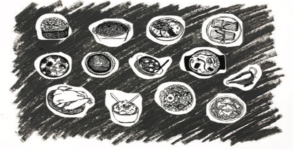Starting on September 17th, hundreds of protesters gathered on Wall Street in New York City, partially as a result of organizing done by Adbusters, a Vancouver-based media activist group.
The goal of the protests (which are planned to take place over the course of two months) is to raise awareness of the fact that about 1 percent of the country’s population holds the wealth, while the other 99 percent are left with very little.
This platform of questioning the effectiveness of capitalism — or rather, calling capitalism out as being ineffective and always requiring a certain percentage of the population to live below the poverty line — is a broad one that has brought together many different activist groups.
So many different groups have now become involved that the ideas behind it have grown to encompass larger problems, including a variety of takes on the current state of the economy and the government.
It’s exciting to see people from so many backgrounds, political or otherwise, come together— anarchists, socialists, libertarians, professors, students and even politicians.
These protests are also proof that the majority of Americans are, in fact, very unhappy with the unfair way big corporations and businesses are taxed (or not taxed) in this country and with how the government is handling it.
What’s even more exciting to The Campanil staff is the way these protests are being covered: Occupy Wall Street has created one of the most widespread cases of independent citizen journalism to date.
This was, in part, spurred by many protesters feeling that the mainstream media wasn’t giving the event enough coverage.
Also, there’s the simple fact that there are so many protesters who possess iPhones or other instant information-sharing devices.
At The Campanil, we are impressed with how both members and people outside of the cause are covering the protest.
There have been so many different sides to the story — so many complexities that The New York Times could never have covered on its own.
Because it’s a protest encompassing so many different opinions, we think it’s important that it is covered by just as many different kinds of media — and so far, it has done just that.


